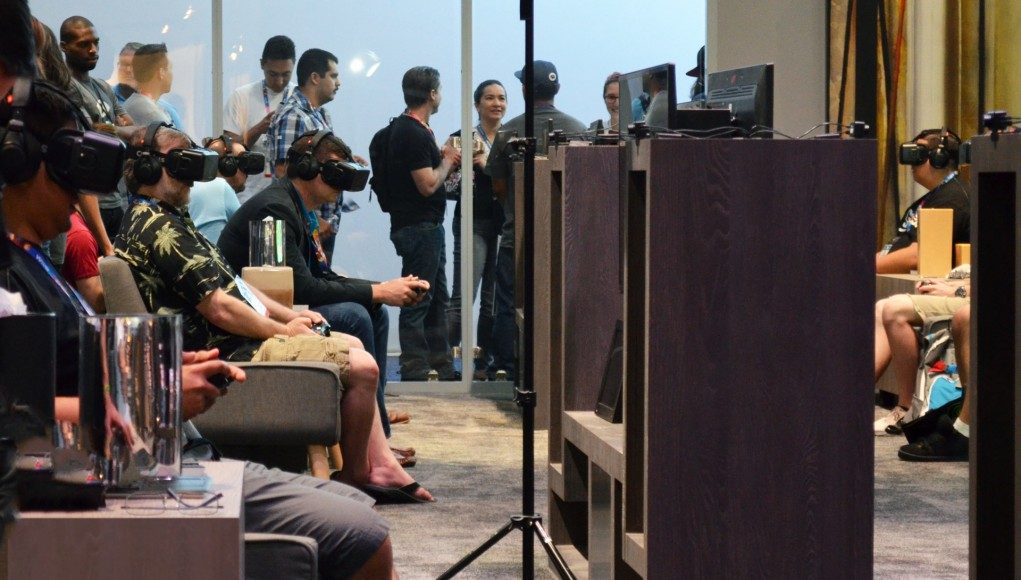E3 2014
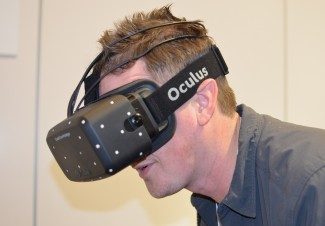
Virtual Reality is gaining momentum. Having demonstrated their latest feature prototype ‘Crystal Cove’ at CES earlier that year, Oculus have launched their second widely available developer kit—the Rift DK2. Like the prototype, the Dk2 housed a 1080p OLED display, taking advantage of the display technology’s fast pixel switching times to deliver low persistence of vision, a technique to reduce motion blur and smooth motion stuttering.
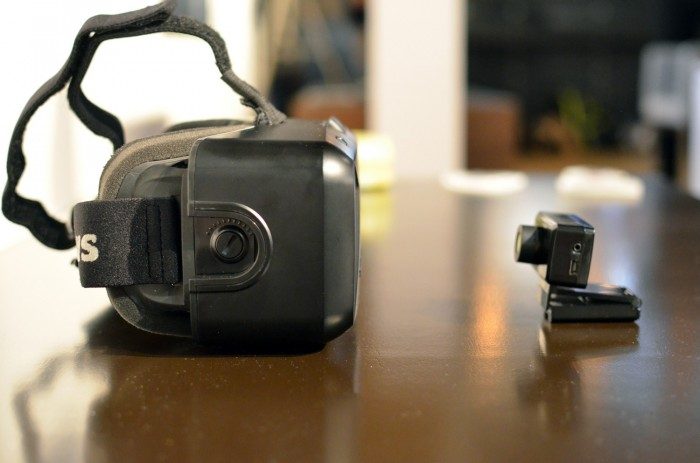
Positional head-tracking via an outside-in camera / IR LED system also promised to alleviate nausea for users as well as add another dimension to VR immersion and interaction. Crystal Cove and the DK2 represented a huge leap in user experience, so much so that Oculus declared the DK2 ‘close enough’ in concept for developers to target when developing for the eventual consumer edition.
See Also: Oculus Announce Consumer ‘Oculus Rift’ CV1 Release Date as Q1 2016
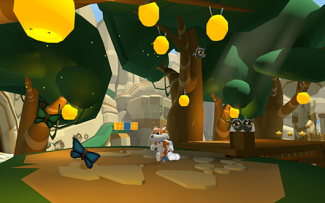
Despite this rapid and continuing hardware evolution in the first half of 2014, E3 itself was, appropriately, really all about the games for Oculus. The company brought with them a wealth of new premium VR experiences to demonstrate VR’s flexibility such as Playful Corp’s third-person platformer Lucky’s Tale, Creative Assembly’s terrifying first person survival horror Alien Isolation and Superhot, a bullet-time action game which leveraged positional head-tracking to bring dreams of living-the-Matrix to life.
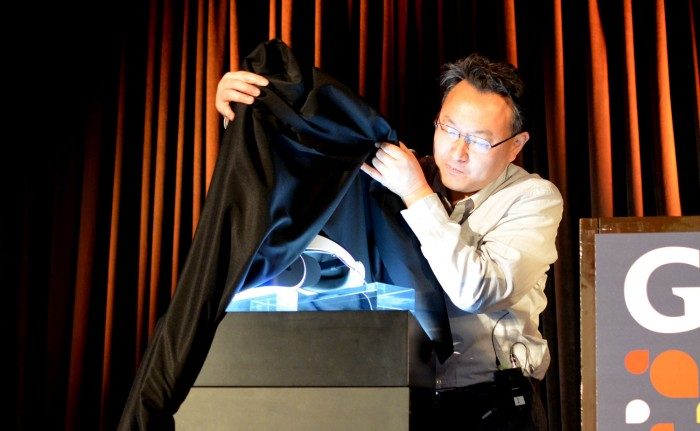
By now, the world had cottoned to the potential of virtual reality and Oculus had been joined by consumer giant Sony in the VR gaming space. Project Morpheus, a VR headset designed for the company’s Playstation 4 game console, had been launched at GDC earlier in the year and Sony were out in full force at E3 showing just what could be done with their unique combination of headset and input system—bringing with it a new lease on life for the 6 DoF Playstation Move controller. It was an impressive showing that confounded those who believed VR to be a PC exclusive platform.
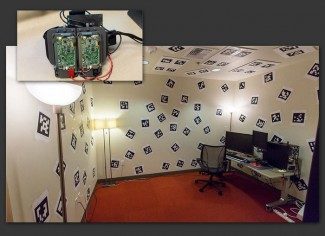
It’s also important to note that Valve had presented their prototype VR technology at their Steam Dev Days event towards the start of 2014. The “Valve Room” demo, given to selected attendees of the event was considered by many as the most impressive virtual reality experience yet shown, one where many excitedly spoke of sustained moments of ‘presence’, a state of heightened psychological immersion in a virtual world. The system seemed to achieve this level of immersion in part due to its unique room-scale positional tracking, at that time using headset cameras and wall mounted fiducial markers.  At this point however, Valve seemed adamant that this technology was purely to help further R&D in the field with no plans to release the hardware to consumers.
At this point however, Valve seemed adamant that this technology was purely to help further R&D in the field with no plans to release the hardware to consumers.
Oh yes, some social media company also liked virtual reality so much, just like the legendary Victor Kiam*, they bought the company.
*This reference requires that you be over the age of 35. If you’re not, Google it.

